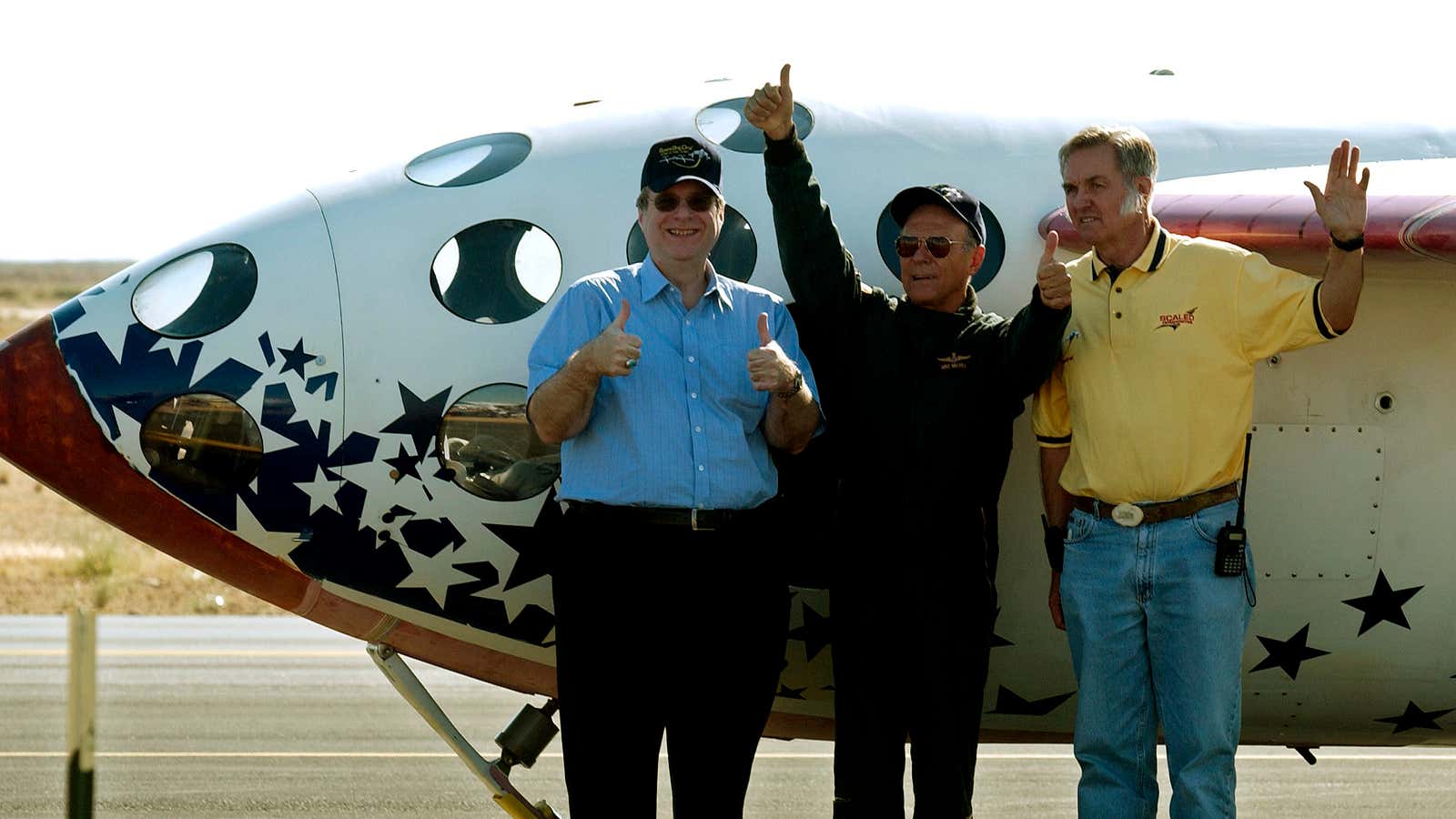Over a billion dollars will be invested into startup space companies this year as entrepreneurs and venture capitalists plot business plans in orbit. Paul Allen, who died yesterday (Oct. 15) at age 65 from complications of non-Hodgkin’s lymphoma, was one of the first investors to prove that space schemes weren’t mere folly.
Allen, who titled his memoir Idea Man, grew up inspired by science fiction and the US Apollo program. He saw the first moon landing in 1969, the same summer as his first Jimi Hendrix concert. Wealth accumulated from his stake in Microsoft and real-estate investments in Seattle allowed him to invest in next-generation space concepts starting in the 1990s.
He passed on several ill-fated ventures, including BlastOff, a moon-focused tech bubble startup from the team behind WebVan, and a company called Rotary Rocket that combined a helicopter’s rotors with rocket propulsion.
However, Burt Rutan, a legendary airplane designer, convinced Allen that he had a design that could win the Ansari X-Prize, a contest that promised $10 million to the first team that could fly the same spaceship, carrying a human being, into space twice in two weeks.
Buzz Aldrin, the second astronaut to walk on the moon, told Allen that Rutan’s design wouldn’t work, according to Julian Guthrie’s chronicle of the venture. She reports Allen asking Rutan, “Have you done a rocket before?”
“No, but I believe in this so strongly, that I would fund it myself if I had the money,” Rutan said.
“Let’s do it,” Allen replied.
He would eventually put $26 million into the construction of SpaceShipOne, which won the X-Prize in 2004. Allen was able to recoup the $10 million in winnings and license the intellectual property to Richard Branson. Branson used it as the basis of Virgin Galactic, which is still on the edge of launching a space tourism operation some 14 years later.
Yet the ability of a private team to take a human into space, which until 2004 only the US, Russia and China (just the year before!) had done—and to do so on a shoestring budget—was a dramatic demonstration that convinced both investors and government officials that new opportunities were ahead. Allen had taken on the risk to make it happen.
At the time, the US space program was reeling from the loss of the Columbia shuttle in 2003. The successful demonstration of SpaceShipOne was one of a handful of factors that convinced Washington to let NASA’s next spacecraft development program include partnerships with private companies. Elon Musk’s SpaceX, founded in 2002, was able to win the first of series of contracts to carry cargo to the International Space Station, saving his company and putting on the path to become the world’s leading commercial rocket-maker.
The leading firms of the new commercial space age, from SpaceX to fellow Seattle billionaire Jeff Bezos’ Blue Origin, may not look exactly like SpaceShipOne or Allen’s more eclectic investments in space technology. Nonetheless, he paved the way for a new approach to doing business in orbit.
“You know, the Spirit of St. Louis was not a design that was scalable or traceable to the Pan Am Clipper,” Michael Griffin, the NASA administrator who kicked off the agency’s partnerships with private firms, told me last year. “It still made history.”
